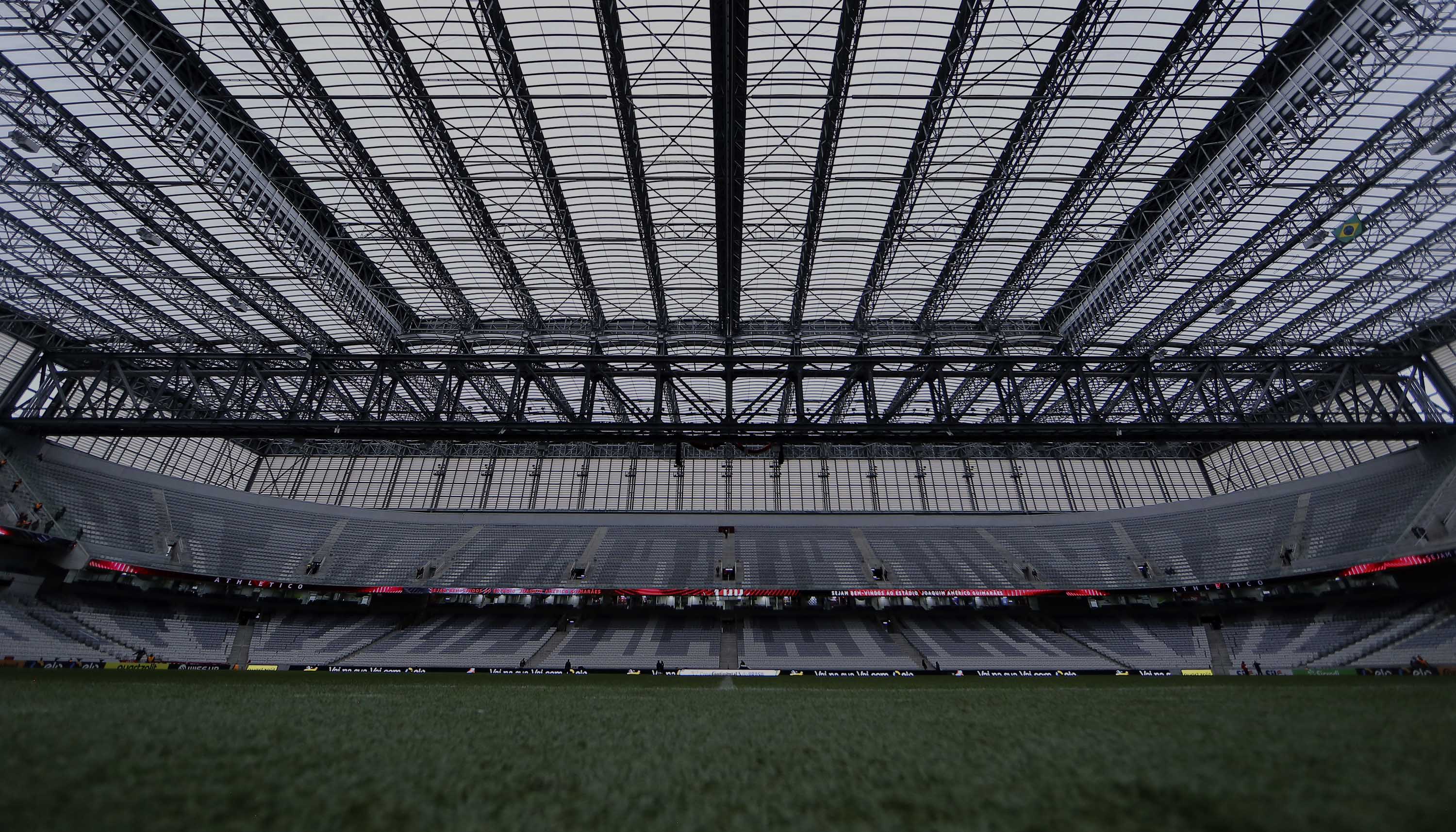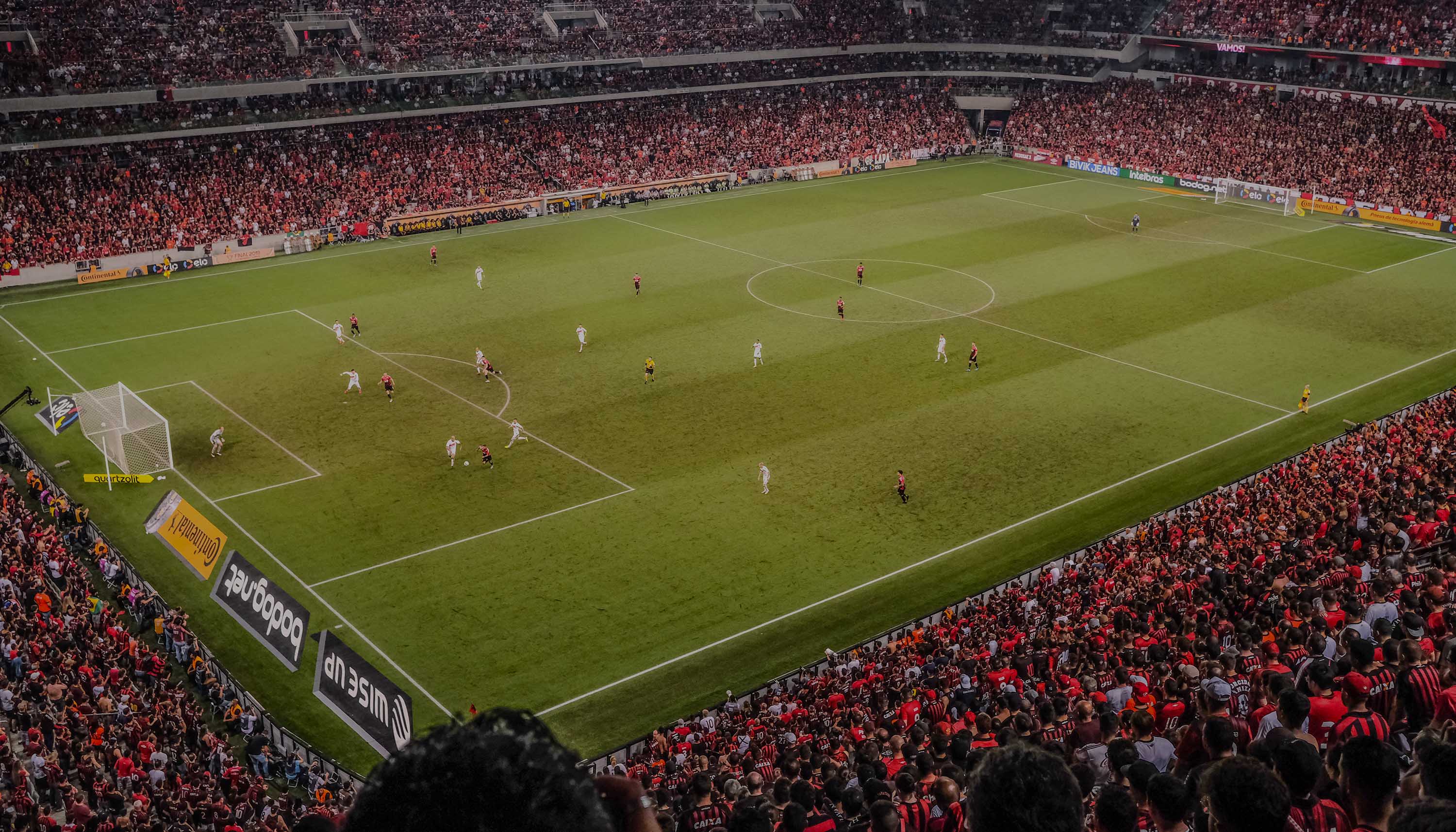

The Joaquim Américo Guimarães Stadium carries over 100 years of history.
43.000 (Games) / 60.000 (events)
40.263 - CAP x Junior Barranquilla (12/12/2018)
Rua Buenos Aires, 1260 - Curitiba

From the first Arena in Brazil, to the retractable roof. Revolutionizing and pioneering Brazilian Football.

It all began in 1913, when Joaquim Américo Guimarães, then Internacional Foot-Ball Club's President, rented a little farm in the Água Verde neighborhood, from the Hauer family, for the construction his club´s headquarters and a stadium to host Internacional's matches.
The idea came true on December 21st 1913, with the inauguration of a still modest stadium, with wooden stands. Internacional's 3-0 victory over Paranaguá in a celebratory friendly marked the Lowland's first game. Top scorer Collares scored all three of the goals.
After the Club's foundation, in 1924, the Red-and-Blacks adopted the stadium.
The Lowland, known at the time as Buenos Aires' Pitch, in reference to the name of the street it is situated in, was the stage where the Hurricane won its first ever title, the Paraná State Tournament of 1925.
After nearly 20 years of renting the Lowland area, the Club finally became its rightful owner in the 1930s, more precisely on November 29th, 1933.
In 1934, the stadium was "baptized" Joaquim Américo Guimarães, in honor of Internacional's former President and patron of the stadium, who passed away on August 30th, 1917. A new dawn started at the Red-and-Black home.
Between 1937 and 1939, the stadium went through its first significant remodelling, when the concrete stands were built. The second happened in 1967, with an increment of the stands, as well as new dressing rooms.
The first lighting system was installed in 1980. That same year, the stadium was once again increased in size. In 1986, the Hurricane started hosting its matches at the Pinheirão, and did not return until 1994, after ample remodelling and further increase in size.
The date of May 26th, 1995 will always stand as one of the most important dates in CAP's history. During a meeting at that fateful day, the Club went through its main revolution. The Administrative Commission, led by Mario Celso Petraglia, was created with the purpose of implementing a new philosophy.
Two years later, CAP began a new phase of its life. In December 1997, the Club began construction of its Arena, an innovative and daring project. The inauguration ceremony, on June 24th 1999, was one of the biggest spectacles the city of Curitiba has seen.
18 months later, CAP supporters would once again get to know their "sanctuary", awarded with a 2-1 win over Paraguay-based Cerro Porteño. The first goal of the Arena was scored by striker Lucas.
The last big reshaping the stadium went through went on between the end of 2011 and early 2014, when the Red-and-Blacks' home was amplified and reshaped to host four FIFA World Cup games. They were: Iran 0-0 Nigeria, Honduras 1-2 Ecuador Australia 0-3 Spain, and Argelia 1-1 Russia.
The stadium's capacity is for 43 thousand during official matches, and 60 thousand during events. It provides the maximum comfort and safety to attendees. Amongst its differentials are the total coverage of the seats, top-notch infrastructure, inside parking, VIP area, private boxes, ample dressing rooms to host the spectacle's protagonists, all of that accessible to handicapped fans.
After five more months of construction, CAP concluded the installation of the retractable roof, in March 2015. The roof is composed by two modules which weigh 280 tons each. The "lids" can be moved solely or together, and can close 25%, 50%, 75%, or 100% of the area. The system can close the roof up to 2 meters per minute, making the total time needed for closing to be 25 minutes. Joaquim Américo is the only stadium in Latin America and the Southern Hemisphere built specifically for soccer to have this technology.
In February 2016, another innovative idea came to life. The Club adopted synthetic grass in its stadium, with the purpose of increasing pitch quality for the players. The flooring is certified by FIFA with the highest level of certification that the International Organization awards, the FIFA PRO. The main difference between the technology CAP decided to use and other types of synthetic grass is the filling GEOFILL system, composed by organic vegetable fibres extracted from coconuts.
The retractable roof and the synthetic grass, not only allow for better conditions when playing football, but also make the stadium a multi use area, able to host all kinds of events.